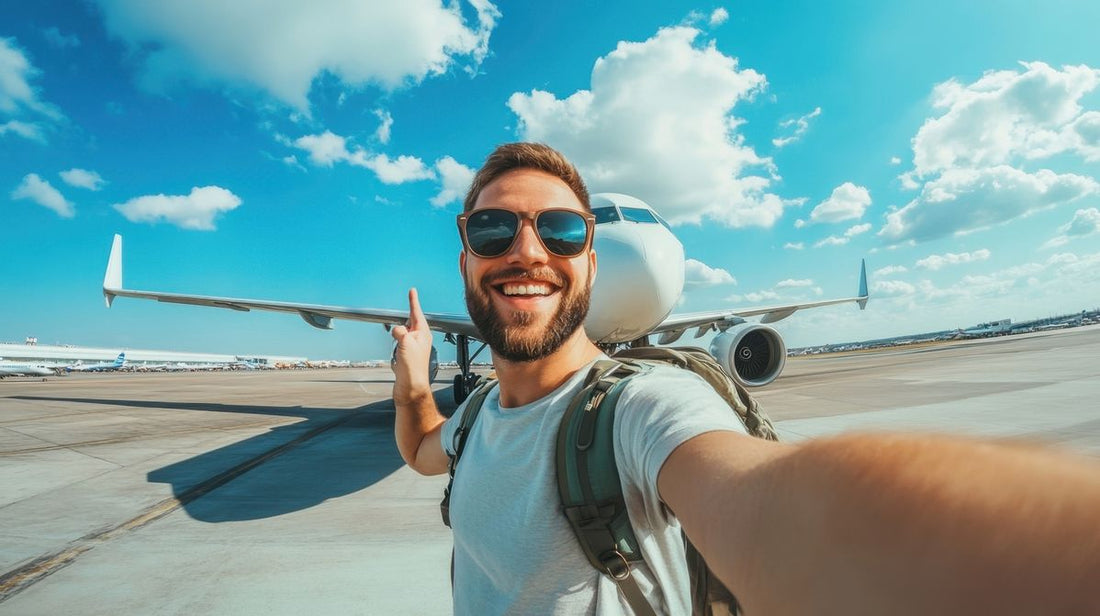
Airport Productivity Playbook: Turn Layovers Into Deep Work ✈️
Share
Airports don’t have to be time-sinks. With a small portable setup, you can turn any gate seat into a legit airport workstation and squeeze out real progress between flights. Think of this as your quick, friendly guide to getting things done while everyone else is doom-scrolling.
Start with the hunt. As you step off the jet bridge, scan for two things: power and quiet. Outlets often hide at the ends of seating rows or near pillars; corners usually mean fewer bump-ins and less overhead chatter. If you can sit with your back to a wall, even better—your gear is safer, your eyes have fewer distractions, and that open document won’t be on public display.
Build the mini desk. No table? No problem. Park your carry-on in front of you and use it as a platform. Pop your laptop on a slim stand so the top of the screen sits near eye level, then unfold your full-size keyboard and set your mouse in front. That simple T-shape layout keeps your wrists straight and your neck happy, which is half the battle for travel productivity. If you’re near big windows or choose outdoor seating, add a laptop sun shade to beat glare and discourage curious glances from the row behind you.
Make the internet behave. Airport Wi-Fi can be… moody. Default to your phone’s hotspot when you need reliability, and keep heavy documents available offline so you can work even if the network dips. If you’re jumping on a call, route audio through your phone and use the laptop purely for notes or screenshare—separating devices keeps gremlins at bay.
Win the battery game. Aim to board with 40–60% charge left. That means plugging in at the gate even for ten minutes; those quick top-ups add up over a travel day. A 20–30k mAh power bank and a tiny universal adapter live in my “essentials” pouch alongside a right-angle USB-C cable so I’m never that person with the elbow knocking someone’s latte.
Work in short, sharp waves. Give yourself a five-minute setup, then a 40–50-minute deep-work block focused on one chunky task—an outline, a draft, a batch of code, a spreadsheet model. Save email for the final few minutes. If you’ve got a longer layover, take a brief walk, refill water, then run a second block. This rhythm keeps your brain fresh and your output high.
Keep your body in the game. Two minutes of micro-mobility does wonders: a few gentle chin tucks for your neck, a couple of shoulder squeezes, quick wrist stretches, and a seated figure-four for your hips. Tiny resets now beat a stiff back for the next three hours in seat 27C.
Mind the etiquette (and your stuff). Loop a bag strap around your leg, keep valuables in front of you, and angle your screen slightly downward. If you have to duck away, fold the keyboard and mouse back into their sleeve and take them with your passport and phone. You’ll be quick, tidy, and far less stressed.
What to carry so you actually use it. The secret isn’t more gear—it’s the right handful that lives together: a compact stand, a full-size foldable keyboard, a precision travel mouse, a small mouse pad, earbuds, a sun shade if you work near windows, and your power kit (bank + adapter). When everything has a single home, setup takes seconds and suddenly every terminal becomes your office.
If you like keeping things simple, DeskMate Pro rolls that core kit—stand, full-size tri-fold keyboard, precision mouse and pad—into one slim sleeve that disappears in your backpack and appears when it’s time to work. That’s the whole playbook: find a pocket of calm, build the mini desk, lock one task, and flow. Do it every layover and you’ll be shocked how much momentum you carry from gate to gate.
Airports haven’t changed. Your setup has. Enjoy the quiet satisfaction of closing your laptop with real work shipped while the boarding line forms—your portable setup just turned travel time into progress.
